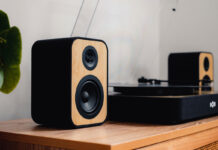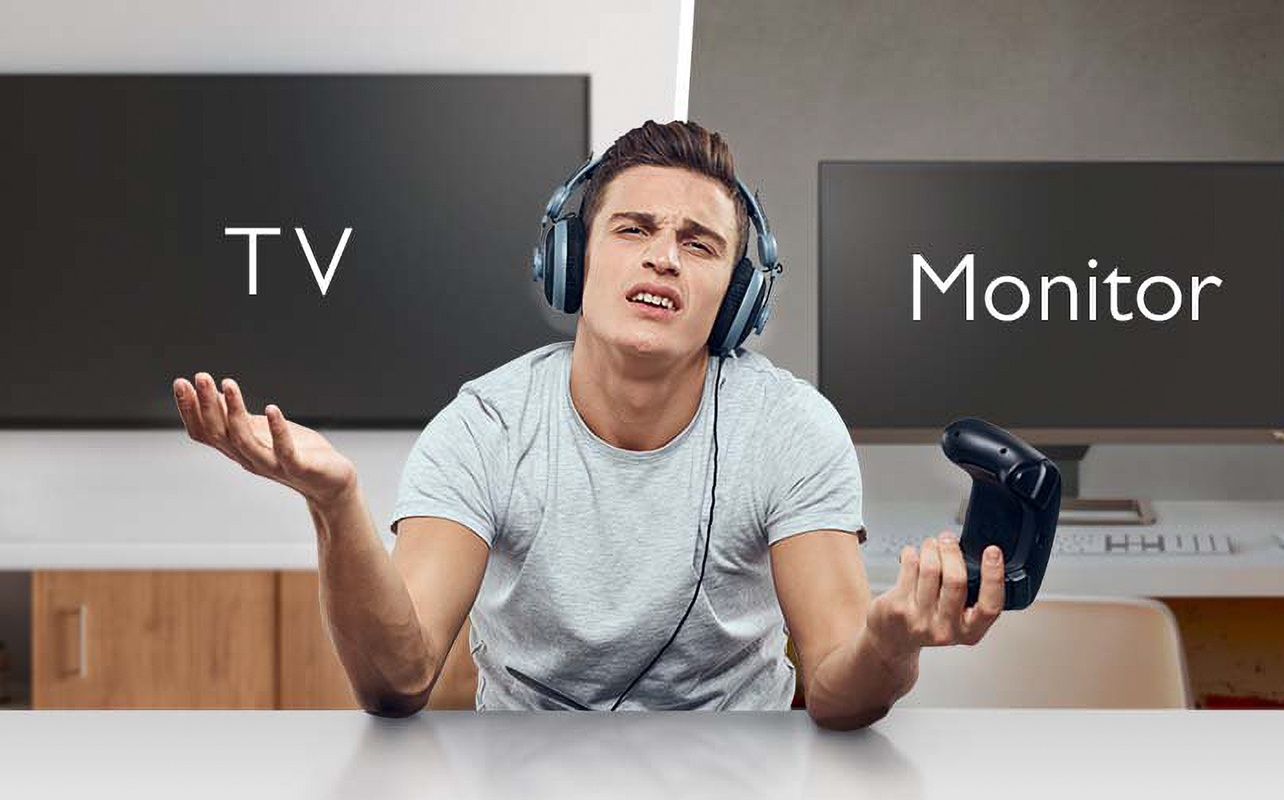
When it comes to levelling up your gaming setup, one question always sparks debate: gaming monitor vs TV—which one’s better? Whether you’re a competitive gamer chasing milliseconds or a casual couch gamer diving into open-world adventures, the screen you play on can make or break your experience.
There are some serious factors to consider—refresh rate, input lag, screen size, resolution, and how well your gear fits into your space. These details might sound technical but don’t worry because this gaming setup guide breaks it all down into simple, easy-to-understand info. So whether you’re gaming on a console or a high-powered PC, you can decide compare gaming monitors and TVs to help you figure out the right fit for your play style.
Gaming monitor vs. TV: key differences
It all comes down to the details—most of which are the technical kind. Start with the key performance specs like refresh rate, input lag, resolution, and screen size to help you see exactly how these two screen types stack up when it comes to speed, smoothness, and overall gaming feel.
1. Refresh rate and response time
One of the most talked-about differences between a gaming monitor and a TV is how smoothly they handle motion, and that’s where refresh rate and response time come in.
Gaming monitors often come packed with refresh rates like 120Hz, 144Hz, or even 240Hz. Translation? These displays update more frames per second, which means less screen tearing, smoother motion, and an all-around better time in fast-paced games like Call of Duty, Valorant, or Overwatch. Monitors also boast super-low response times in milliseconds—think 1ms to 5ms—helping you react instantly without motion blur or ghosting.
TVs, on the other hand, typically have lower refresh rates—usually at 60Hz or 120Hz. It’s far more common now that the latest high-end models will support 120Hz gaming, especially those equipped with HDMI 2.1. Response times tend to be longer than monitors, which could slightly affect performance in competitive gaming—but you might not even notice while playing story-driven games or casual titles.
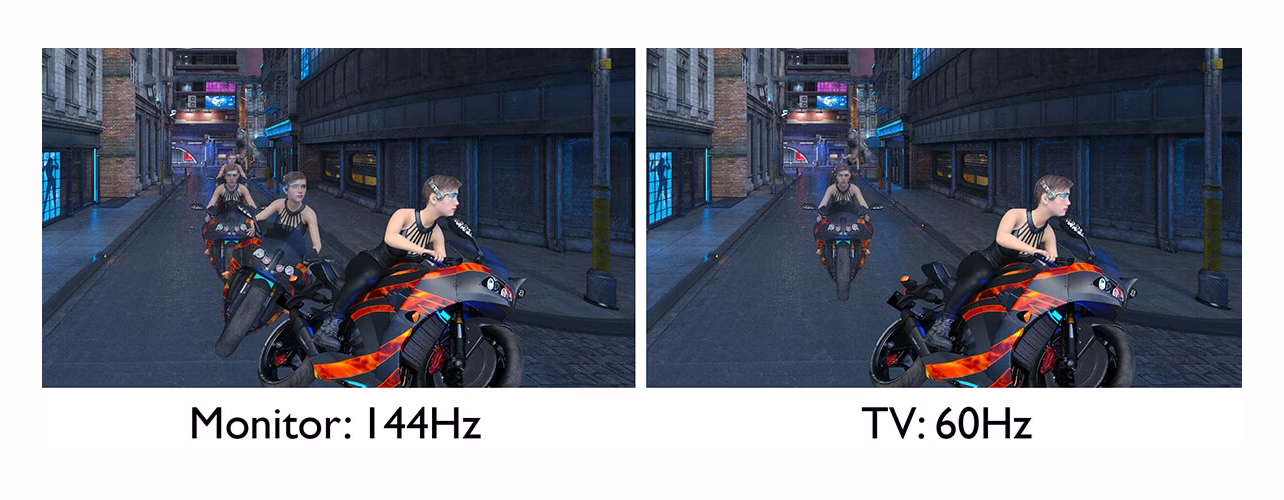
2. Input lag and latency
If you’re gaming in real-time and every second counts, input lag is another critical factor. Quick reactions are vital, especially in competitive multiplayer gaming sessions. Minimizing input lag ensures your movements are registered instantly, giving you the advantage in all fast-paced scenarios.
Gaming monitors shine here with ultra-low input lag—often under 5ms. This is crucial for competitive games where every button press needs to register without any latency. Whether you’re playing with a keyboard and mouse or a controller, the responsiveness on a gaming monitor feels instant.
TVs have historically lagged (pun intended) in this area, but manufacturers have also upped their game. Many modern TVs now include Game Mode, which cuts down on processing to reduce lag. Some also support Variable Refresh Rate (VRR) to sync refresh rates with your console or PC, helping reduce stutter and tearing. Still, if split-second reaction time is your priority, monitors always have the edge.
3. Screen size and immersion
Here’s where the TV fights back. While gaming monitors typically excel in performance, TVs offer a huge size advantage.
TVs come in so many sizes, especially larger ones—50 inches and up is pretty standard. That gives you a more immersive, cinematic experience, especially when gaming from the couch. It’s perfect for RPGs, first-person shooters (FPS), sports games, or split-screen multiplayer with friends.
Monitors are smaller, usually ranging 24-34 inches. While that may sound limiting, the benefit is better pixel density; you’re sitting closer to the screen, so everything looks sharper and more detailed. For desk setups, especially those with dual screens or ultra-wide ones, monitors feel focused and efficient.
4. Resolution and HDR
Resolution and HDR (High Dynamic Range) are all about how pretty your game looks—and this is where things get interesting.
TVs tend to lead in HDR performance. Most mid- to high-end TVs offer full 4K resolution and wide HDR support (like Dolby Vision or HDR10+), making games look rich, vibrant, and lifelike. If you’re playing visually stunning titles like Horizon Forbidden West or Cyberpunk 2077, a good 4K TV can be jaw-dropping.
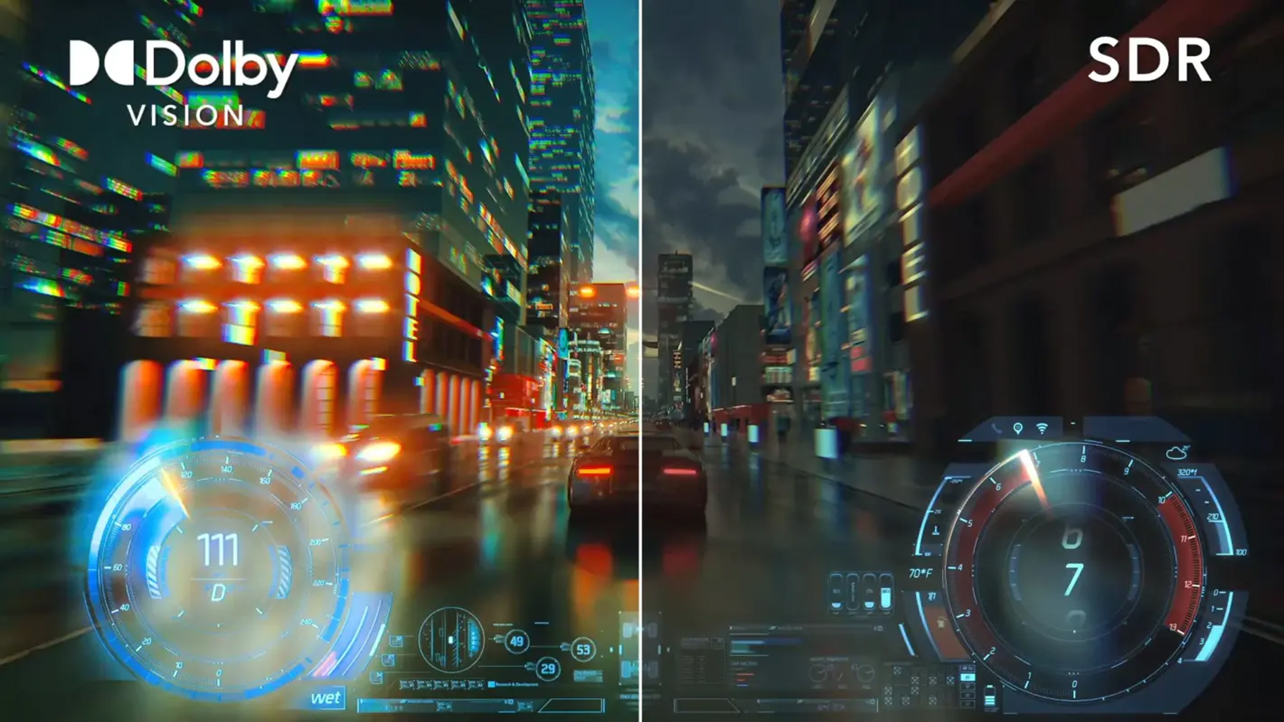
Gaming monitors come in a variety of resolutions—from 1080p to 1440p to 4K—and often deliver excellent pixel density, especially at close range. Some premium monitors also support HDR, but they generally don’t get as bright or dynamic as TVs in this area. Still, if you’re focused on performance, the slightly less impressive HDR may be a trade-off you’re willing to make.
5. Compatibility and features
Let’s talk connectivity and features—because not all ports are created equal. Understanding those differences is also key to making the right choice.
TVs are typically built with console gamers in mind. Many now support HDMI 2.1, VRR, ALLM (Auto Low Latency Mode), and Dolby Vision—perfect for the PS5 or Xbox Series X. If you’re into console gaming and want a sleek, minimal setup, a TV can handle it all.
Gaming monitors offer more unique gaming features like DisplayPort, G-Sync (for NVIDIA users), and FreeSync (for AMD users). These adaptive sync technologies eliminate screen tearing and stuttering, especially when your frame rates jump around. DisplayPort also supports higher refresh rates and resolutions—a win for PC gamers.
Additional factors to consider when buying
Beyond just specs, your ideal gaming screen also depends on practical things like your budget, available space, and how you plan to use it day-to-day. This section covers the lifestyle side of the decision, from cost comparisons to whether you’re a couch gamer, a desk warrior, or someone who needs their screen to do it all.
Budget and value for money
Let’s face it, price matters.
TVs typically give you a bigger screen for the price. You can get a decent 50-inch 4K TV for less than a high-end 27-inch gaming monitor. That’s a solid deal if screen size and entertainment value are top priorities.
Gaming monitors can be more expensive for their size, especially models with 144Hz+ refresh rates and low latency. But if you’re chasing top-tier performance for competitive play, the price often justifies the edge you’ll get.
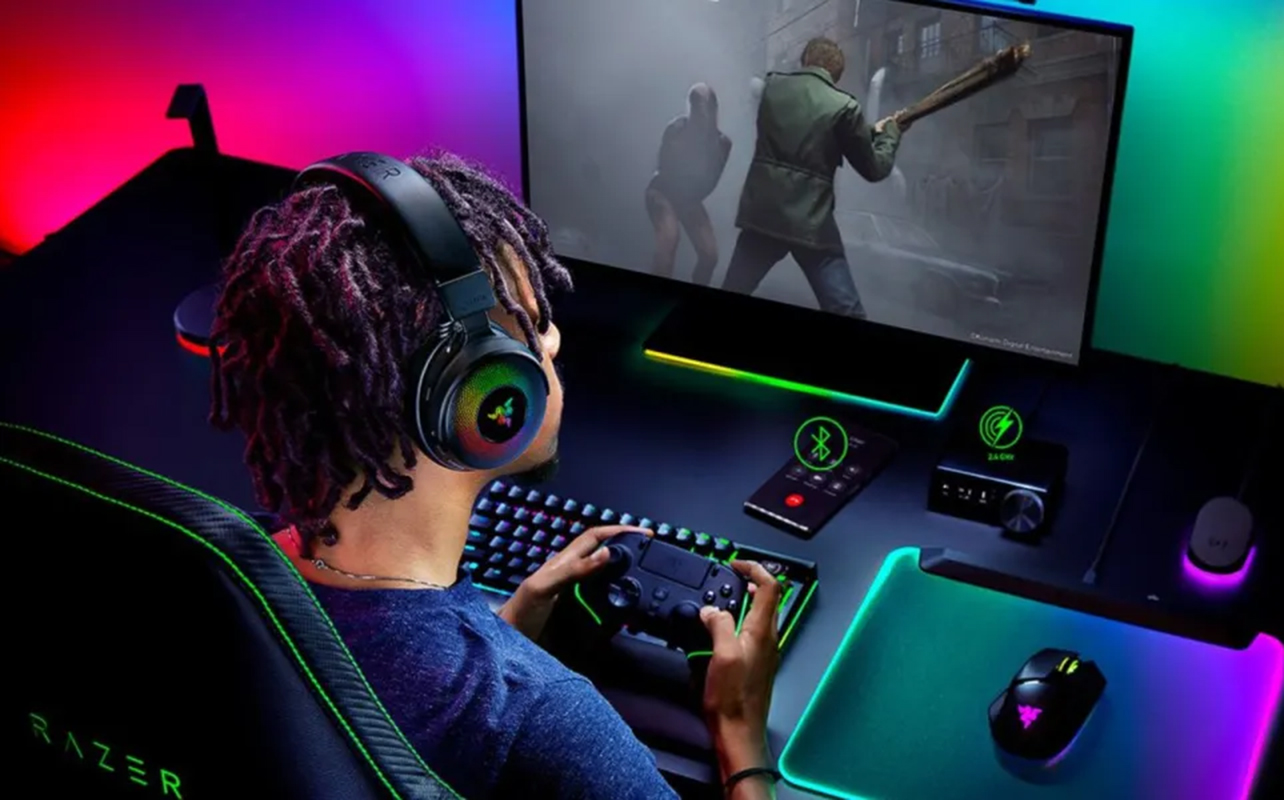
Space and setup
Your available space can make a big difference in your choice.
TVs will serve you better in larger living rooms, home theatre setups, or shared gaming spaces. They’re perfect if you prefer lounging on the couch with a wireless controller.
Monitors are ideal for desk setups. If you’re gaming with a keyboard and mouse, streaming, or working at the same station, a monitor keeps everything in one spot in a neat and functional way.
Multi-purpose use
Whether it’s for streaming movies, binge-watching shows, or working from home, the versatility of each display type can make a big difference in your overall setup.
TVs are great for multitaskers. You can use one to game, binge-watch a new show, stream Netflix, or even connect it to a soundbar for an all-in-one media setup.
Monitors change tack because they’re typically more linear and performance-focused. They’re excellent for gaming, creative work, and productivity—just not always ideal for shared viewing or entertainment (unless you’re seated right in front of them).
Gaming monitor vs. TV: which one should you choose?
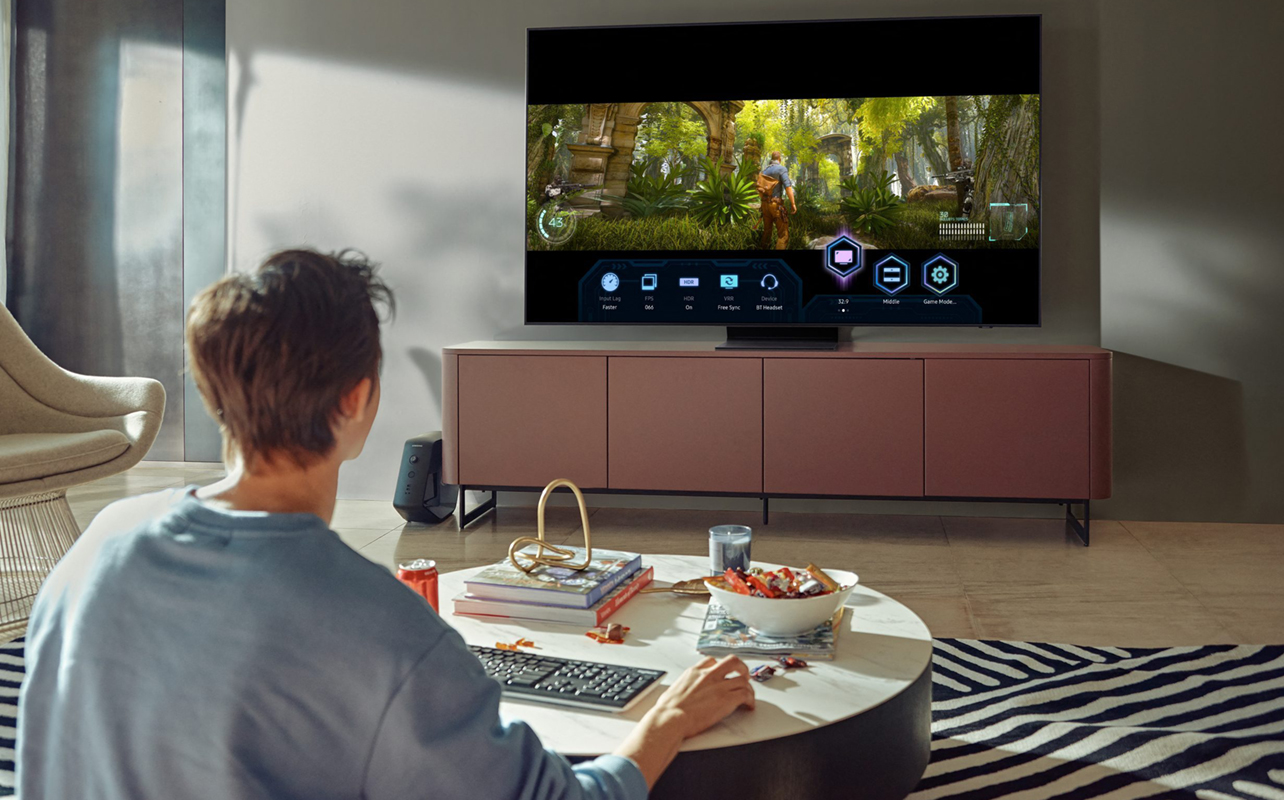
Here’s the gist based on your gaming style:
- For competitive gamers: Go with a gaming monitor. Low input lag, fast response times, and high refresh rates will give you the competitive edge you need.
- For console and casual gamers: Choose a TV. The larger screen size and better HDR support make for a more immersive, cinematic experience. Plus, it’s easier to play with family and friends this way.
- For PC gamers: A gaming monitor is your best friend. You’ll benefit from DisplayPort, high frame rates, and advanced adaptive sync features.
- For hybrid users: If you want both performance and entertainment, a high-end TV with HDMI 2.1, low input lag, and a 120Hz refresh rate offers the best of both worlds.
Make the right choice for your gaming experience
At the end of the day, choosing between a gaming monitor and a TV comes down to your personal setup and how you like to play. If you’re all about fast-paced, competitive gameplay where milliseconds matter, a gaming monitor helps by delivering high refresh rates and ultra-low latency. But if you’re more into immersive, story-rich games or love gaming on the couch with friends, it’s easy to like a TV’s larger screen and HDR performance.
Still on the fence? Think about your space, your gear, your budget, and how much of your gaming time is spent button-mashing for headshots versus vibing in single-player quests. Explore the latest gaming monitors and gaming TVs at Best Buy Canada, and find the perfect screen that suits how you want to play.
Frequently asked questions
1. Can you use a gaming monitor as a TV?
Absolutely! While gaming monitors aren’t designed to be entertainment hubs, you can still stream content using smart sticks (like Chromecast or Fire TV), gaming consoles, or even your PC. Just keep in mind that most monitors don’t have built-in speakers or smart TV features.
2. Is gaming better on TV or monitor?
It depends on what kind of gamer you are. A monitor will always offer more speed and precision, adding a competitive edge. If you’re looking for a laid-back, immersive experience, especially with a console, a TV might be more effective. It’s all about your personal preference and how you play.
3. What’s better for PS5 or Xbox Series X: gaming monitor or TV?
Both work great, but here’s the breakdown:
- If you want the best visuals and cinematic gaming, go with a TV, ideally one with HDMI 2.1, 4K, and 120Hz support. A 4K TV with HDMI 2.1 and 120Hz delivers stunning visuals and smoother motion, perfect for immersive, cinematic experiences in story-driven games. The larger screen enhances immersion, making it ideal for RPGs and open-world titles.
- If you’re into competitive or high-performance gaming, a gaming monitor with 120Hz refresh rate and low input lag is the way to go. A gaming monitor offers superior performance with faster refresh rates and lower input lag, ensuring smooth, responsive gameplay. This is crucial for competitive gamers who need precision and quick reactions in fast-paced games.
4. Can I connect my PC to a TV instead of a monitor?
Yes! Most modern TVs support HDMI connections, so you can easily plug in your PC. Just be sure your TV supports the refresh rate and resolution your PC can output. Also, keep an eye on input lag, especially since a monitor is still the better bet if you’re gaming competitively.
This article was drafted using AI technology and then reviewed, fact-checked, and revised by a member of our editorial team.




